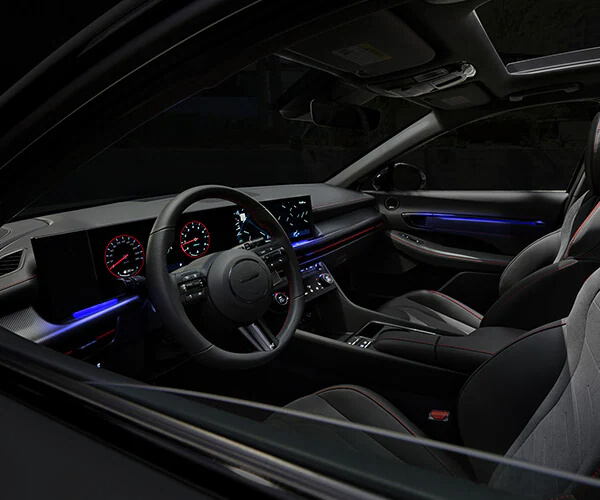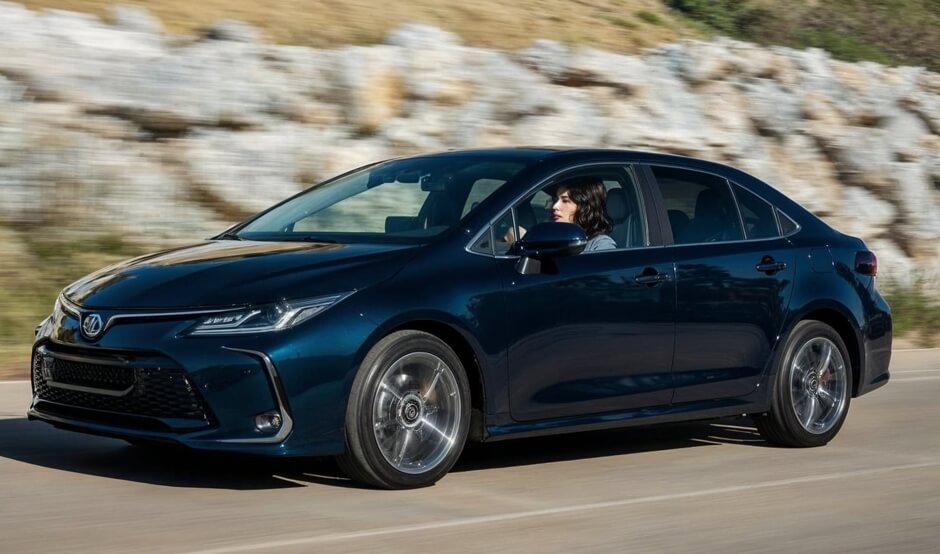Mid-range cars have long ceased to be just a means of transport. In 2025, the most technologically advanced mid-range models offer innovative solutions that make driving safer, more comfortable and more fun. From autonomous driving systems to advanced multimedia interfaces, these cars are setting new standards. In this article, we'll break down which mid-size models stand out for their technology. We'll find out how Toyota, Hyundai, Mazda and other brands are integrating innovation into their cars.
Toyota Corolla: the technology leader of the middle class
The Toyota Corolla has long been considered a benchmark for reliability. However, in 2025, it is also among the most technologically advanced mid-size models thanks to the Toyota Safety Sense 3.0 package. This system includes adaptive cruise control with lane keeping function. Moreover, the Corolla is equipped with pedestrian and cyclist recognition even at night. This makes it one of the safest cars in its class.
The Corolla's multimedia system is also impressive. The 10.5-inch screen supports Apple CarPlay and Android Auto. In addition, there's a voice-activated feature that lets you control navigation and climate control. As a result, the Corolla is ideal for those who appreciate technology and practicality.
Hyundai Sonata: innovation for comfort
The 2025 Hyundai Sonata is another shining example of how mid-range technology cars can compete with the premium segment. The Sonata features a digital instrument cluster and a projection display. The SmartSense system, for example, includes blind spot monitoring and parking assistance. This is particularly useful in urban environments.
In addition, Sonata offers a remote control function via an app. The driver can start the engine or adjust the climate control from a smartphone. Moreover, the hybrid version of the Sonata consumes only 5.5 litres per 100 km. Hyundai is thus emphasising the combination of technology and economy.

Mazda 3: technology and style in one
The 2025 Mazda 3 stands out not only for its design, but also for its advanced technology. It is among the most technologically advanced mid-size models thanks to the i-Activsense system. This technology includes adaptive headlights that automatically adjust the light based on conditions. There's also a rear cross-traffic alert system.
The interior of the Mazda 3 features a 12-inch screen with an intuitive interface. For example, the system supports wireless smartphone connectivity. Moreover, Mazda has introduced G-Vectoring Control Plus technology that improves handling in corners. As a result, the Mazda 3 combines style and innovation, making it popular with young drivers.
Honda Civic: a high-tech approach
The 2025 Honda Civic continues the tradition of technology. It made the list of innovative mid-size models thanks to the Honda Sensing system. This technology includes automatic emergency braking and monitoring of the driver's condition. For example, if the driver is distracted, the system beeps.
The Civic's multimedia system features a 9-inch screen with 5G support. This allows the car's software to be updated in real time. In addition, the Civic offers a 200bhp hybrid engine that provides acceleration to 100km/h in 7.5 seconds. Thus, the Honda Civic is ideal for those looking for a balance between technology and dynamics.
Volkswagen Passat: German technology
The 2025 Volkswagen Passat is a mid-range high-tech car with German quality. The model is equipped with the IQ.Drive system, which includes semi-autonomous driving. For example, the Passat can move independently in traffic jams, keeping the lane and distance. This reduces the driver's workload.
The Passat's interior impresses with a 15-inch multimedia screen. Moreover, there is a digital instrument panel with customisable widgets. The Passat also offers a smartphone parking function. As a result, Volkswagen emphasises convenience and safety, which appeals to family buyers.
Security technologies: what's new in 2025?
Safety is a key aspect that sets the most technologically advanced mid-range models apart. In 2025, many brands have introduced driver monitoring systems. For example, Toyota and Honda use cameras to track the driver's eyes. If the system notices signs of fatigue, it suggests taking a break.
In addition, emergency braking systems have become standard. They recognise not only cars, but also pedestrians, cyclists and even animals. Moreover, Mazda and Volkswagen have added adaptive headlights that improve visibility at night. In this way, safety technologies make driving more secure.
Multimedia and communication: a new level of comfort
Multimedia systems in the mid-range have reached a new level. The most advanced mid-range cars offer high-resolution screens with 5G support. The Hyundai Sonata and Volkswagen Passat, for example, allow software updates via the internet. This means that the car will always be one step ahead.
Integration with voice assistants is also popular. Mazda 3 and Honda Civic support Alexa and Google Assistant. What's more, the systems offer wireless smartphone connectivity. As a result, drivers can control music, navigation and calls without taking their eyes off the road.
Eco-friendliness and technology: hybrids are on trend
Eco-friendliness is another area where mid-range technology cars are leading the way. In 2025, almost all models offer hybrid versions. The Toyota Corolla, for example, consumes just 4.5 litres per 100 km on a mixed cycle. Hyundai Sonata and Honda Civic also offer fuel-efficient hybrids.
Mazda has also introduced SKYACTIV-X technology, which improves engine efficiency. This reduces CO2 emissions without losing power. Moreover, the Volkswagen Passat offers a plug-in hybrid with an electric range of up to 60 kilometres. In this way, the middle class becomes more environmentally friendly.
Comparison with competitors: who is winning?
Comparing the most technologically advanced mid-range models, the leaders stand out. Toyota Corolla wins in safety thanks to Toyota Safety Sense. The Hyundai Sonata leads the way in remote-controlled multimedia. The Mazda 3 offers the best balance of style and technology, and the Honda Civic stands out in dynamics.
Volkswagen Passat, in turn, attracts with semi-autonomous driving. However, each model has its own disadvantages. For example, the Corolla is inferior in power, and the Passat is more expensive than its competitors. Moreover, Mazda 3 may seem cramped for families. As a result, the choice depends on the buyer's priorities.
The future of technology in the middle class
The future of the middle class looks promising. In 2026, AI is expected to be deployed to control vehicle systems. For example, Toyota plans to integrate AI into Toyota Safety Sense to predict accidents. Brands are also working on expanding 5G networks for better connectivity.
In addition, hybrid technology will continue to evolve. Mazda and Hyundai are planning to increase the share of plug-in hybrids. Moreover, Volkswagen is working on Level 3 autonomous driving. As a result, the most technologically advanced mid-range models will become even smarter.
Conclusion: technology for everyone
The most technologically advanced mid-range models in 2025 offer innovations previously only available in the premium segment. The Toyota Corolla, Hyundai Sonata, Mazda 3, Honda Civic and Volkswagen Passat set the standard in safety, multimedia and environmental friendliness. Each model has its own strengths, whether it's semi-autonomous driving or low fuel consumption. If you're looking for a car that combines technology and affordability, the mid-size is your best choice.

 The most technologically advanced mid-range models of 2025">
The most technologically advanced mid-range models of 2025">
